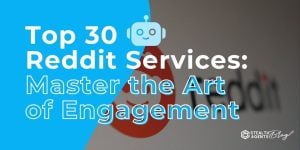30 Product Lifecycle Business Essentials
In the dynamic world of business, the birth, life, and eventual withdrawal of products is a structural constant as predictable as the lifecycle of any living organism. Whether you’re a startup entrepreneur or a seasoned industry magnate, comprehending and navigating the twists and turns of the product lifecycle is not just a strategic advantage, but a fundamental necessity.
The Product Lifecycle Paradigm
The product lifecycle comprises four distinct stages: introduction, growth, maturity, and decline. At each phase, businesses face unique challenges and opportunities. Let’s delve into each integral part of the journey, unravel the inherent complexities, and distill 30 essential business practices for flourishing at every step.
-
Product Lifecycle: The cycle through which every product goes from its introduction to market withdrawal or end of life.
-
Introduction Stage: The phase where a new product is first brought to market.
-
Growth Stage: The stage of the product lifecycle where the product gains more market acceptance and grows in revenue.
-
Maturity Stage: The phase in which the product’s sales growth slows or levels off after reaching peak market penetration.
-
Decline Stage: The stage where the product begins to lose market share and sales start to fall.
-
Market Saturation: The point in the product lifecycle where the market is filled with the product, leaving little room for growth.
-
Product Innovation: The process of making improvements or significant contributions to a product’s design, production, or application.
-
Product Development: The creation of new products or improvements to existing products.
-
Product Diversification: Expanding the range of products offered to the market.
-
Brand Extension: Extending an existing brand name to new product categories.
-
Product Adaptation: Modifying an existing product for different customers or markets.
-
Market Penetration Strategy: Strategies aimed at increasing sales of existing products to the current market.
-
Product Portfolio Management: Managing a company’s group of products as a whole.
-
Obsolescence: The process of a product becoming outdated or no longer needed.
-
Product Relaunch: Reintroducing a product with modifications in response to market feedback or declining sales.
-
Market Segmentation: Dividing a broad target market into subsets of consumers who have common needs and priorities.
-
Repositioning: Changing the market’s perception of a product in relation to competing products.
-
Product Differentiation: Making a product distinct from similar products offered by competitors.
-
Lifecycle Management: Strategies used to manage the lifecycle and improve the overall sustainability of a product.
-
Early Adopters: The first customers who buy a product shortly after its introduction.
-
Cash Cow: A product in the maturity stage that generates more money than it costs to maintain.
-
Price Skimming: A pricing strategy involving setting high prices initially and lowering them over time.
-
Penetration Pricing: Setting a low initial price for a product to quickly attract a large number of customers.
-
Product Revitalization: Updating or improving a product to boost its sales and extend its lifecycle.
-
Value Analysis: Evaluating a product to improve its value by either improving its function or reducing its cost.
-
Cross-Selling: Selling related products to customers who have already bought or are buying a different product.
-
Sales Forecasting: Predicting future sales volumes over a given period.
-
Product Positioning: How a product is perceived in the context of competing products in the market.
-
Market Exit Strategy: A plan for withdrawing a product from the market at the end of its lifecycle.
-
Product Harvesting: Reducing investment in a product and extracting maximum profits as it enters the decline stage.
Conclusion
Each of these essentials acts as a column in the grand temple of product lifecycle management. As you implement them in your business, you’re not just ensuring the longevity of your products – you’re building a robust, adaptable, and growth-oriented business structure that can weather any market storm.
Remember, business is not just about selling units; it’s about crafting a legacy. By mastering the art of product lifecycle management, your business isn’t just responding to market trends; it’s becoming the trendsetter. It’s not just surviving in the market; it’s thriving, creating a legacy that stands the test of time.










